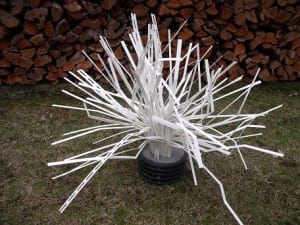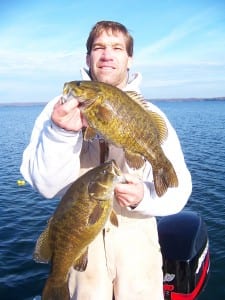The U.S. Fish and Wildlife Service announces the availability of a draft Environmental Impact Statement evaluating a proposed multi-species, multi-state draft Habitat Conservation Plan and application for an incidental take permit under the Endangered Species Act. The HCP was developed by NiSource Inc., primarily a natural gas transmission, distribution and storage company, as it seeks an incidental take permit for operating and maintaining its network of pipelines in 14 northeastern, Midwest and southeastern states.
The Endangered Species Act requires an approved Habitat Conservation Plan before an incidental take permit is granted. HCPs are agreements between a landowner and the Service, allowing landowners to undertake otherwise lawful activities on their property that may result in the incidental death, injury or harassment of a listed species; the landowner agrees to conservation measures designed to minimize and mitigate the impact of those actions.
In its draft EIS, the Service evaluated the possible environmental impacts of implementing NiSource’s Habitat Conservation Plan and the potential effects of granting an incidental take permit under the Endangered Species Act. Among the alternatives evaluated by the Service are issuing a permit for 50 years, as requested by NiSource; a “no-action” alternative, under which NiSource would continue to work with the Service on a case-by-case basis for all its activities; and issuing a permit for 10 years.
NiSource’s draft HCP covers the company’s activities that may result in take of endangered or threatened species along its pipeline network. The plan addresses conservation needs for 10 federally endangered, threatened or proposed species for which take might occur, along with measures to avoid take of an additional 33 federally endangered, threatened or candidate species. NiSource’s draft HCP includes measures to avoid or reduce impacts on those species resulting from business activities, as well as mitigation practices such as protecting existing habitat, creating new habitat for protected species, and identifying research to better understand endangered species.
The Service is accepting comments on the draft EIS through October 11, 2011. Send written comments via U.S. mail to the Regional Director, Midwest Region, Attn: Lisa Mandell, U.S. Fish and Wildlife Service, Ecological Services, 5600 American Blvd. West, Suite 990, Bloomington, MN 55437-1458, or by electronic mail to permitsR3ES@fws.gov
Public meetings will be held in Columbus, Ohio, Lexington, Kentucky, and Charleston, West Virginia during the summer 2011:
August 16, 2011, 7:00 p.m., University Plaza Hotel and Conference Center, 3110 Olentangy River Road, Columbus, OH 43202.
August 17, 2011, 7:00 p.m., Ramada Conference Center, 2143 N. Broadway, Lexington, KY 40505
August 18, 2011, 7:00 pm, Charleston Ramada Plaza, 400 2nd Ave., S. Charleston, WV 25303.
More information about the EIS and HCP, along with locations, dates, and times of specific public meetings can be found at: http://www.fws.gov/midwest/Endangered/permits/hcp/nisource/
The mission of the U.S. Fish and Wildlife Service is working with others to conserve, protect, and enhance fish, wildlife, plants, and their habitats for the continuing benefit of the American people. We are both a leader and trusted partner in fish and wildlife conservation, known for our scientific excellence, stewardship of lands and natural resources, dedicated professionals, and commitment to public service.
See the dozens of unique artificial fish habitat models, fish attractors and fish cover used at fishiding.com, the industry leader and only science based, man made and artificial fish habitat, proven to provide all fish with cover they prefer to prosper.
For more information on our work and the people who make it happen, visit http://www.fws.gov Connect with our Facebook page at http://www.facebook.com/usfws follow our tweets at http://www.twitter.com/usfwshq watch our YouTube Channel at http://www.youtube.com/usfws and download photos from our Flickr page athttp://www.flickr.com/photos/usfwshq







